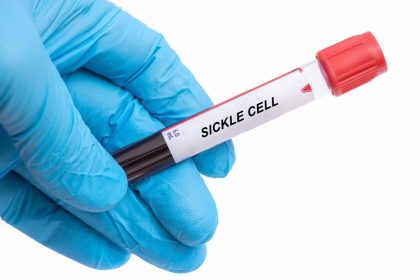Exhaustion that won’t go away, bruises that appear without explanation, and infections that keep coming back might seem like separate annoyances of daily life. But when these symptoms cluster together, they could be pointing to something far more serious than stress or aging – acute myelogenous leukemia, a rapidly progressing blood cancer that strikes approximately 4 in every 100,000 people each year.
This form of leukemia doesn’t announce itself with obvious warning signs. Instead, it masquerades as common health complaints that many people dismiss or attribute to busy lifestyles, lack of sleep, or minor illnesses. The danger lies in this deception – while patients assume their symptoms are temporary inconveniences, cancerous cells are multiplying rapidly in their bone marrow, crowding out healthy blood cells and compromising their body’s ability to function normally.
Understanding these warning signs and recognizing when seemingly unrelated symptoms might actually be connected could make the difference between early detection and a medical emergency.
What happens when leukemia invades your bone marrow
Acute myelogenous leukemia begins in the bone marrow, the soft tissue inside bones where all blood cells are created. In healthy people, this remarkable factory produces red blood cells to carry oxygen, white blood cells to fight infections, and platelets to help blood clot when needed.
When AML strikes, the bone marrow starts producing massive numbers of immature, defective white blood cells called leukemia cells. These abnormal cells can’t mature into functional infection-fighting cells, but they don’t die off like normal cells would. Instead, they accumulate rapidly, taking up space and resources that should go to healthy blood cell production.
This cellular chaos explains why AML symptoms seem to affect multiple body systems simultaneously. As healthy blood cell production drops, patients experience the cascading effects of having too few red blood cells, functional white blood cells, and platelets circulating in their bloodstream.
The 11 warning signs that shouldn’t be ignored
- Persistent fever without obvious cause: Running a temperature regularly, especially when there’s no clear infection, can indicate the immune system is under attack from within.
- Extreme fatigue that rest doesn’t fix: Feeling exhausted even after adequate sleep or rest, particularly when this tiredness interferes with normal activities and doesn’t improve over time.
- Shortness of breath during routine activities: Finding yourself winded from tasks that never bothered you before, like climbing stairs or walking short distances.
- Pale skin that others notice: A noticeable loss of color in the skin, lips, or nail beds that may be accompanied by feeling cold or weak.
- Frequent infections that won’t resolve: Getting sick more often than usual, having infections that take longer to heal, or developing unusual infections that healthy immune systems typically prevent.
- Easy bruising from minor bumps: Developing large, dark bruises from small impacts that wouldn’t normally cause visible marks, or finding bruises without remembering any injury.
- Bleeding that’s hard to stop: Cuts that take longer to stop bleeding, nosebleeds that occur frequently, or unusually heavy menstrual periods in women.
- Tiny red spots under the skin: Small, flat red or purple dots called petechiae that appear on the skin, particularly on the legs, feet, or inside the mouth.
- Bone or joint pain without injury: Aching in bones or joints that isn’t related to exercise, injury, or arthritis, particularly in the back, ribs, or long bones of arms and legs.
- Swollen lymph nodes that persist: Enlarged lymph nodes in the neck, armpits, or groin that don’t shrink after a few weeks or aren’t associated with an obvious infection.
- Loss of appetite with rapid weight loss: Feeling full quickly when eating, having no desire for food, or losing weight without trying to diet or increase exercise.
These symptoms often develop gradually and may fluctuate in severity, which can make them seem less concerning than they actually are. The key is recognizing when multiple symptoms persist or worsen over time.
Why AML affects different people differently
The way acute myelogenous leukemia presents can vary significantly from person to person. Age plays a major role in both susceptibility and symptom patterns. While AML can strike at any age, it predominantly affects adults over 65, though children and younger adults can also develop this cancer.
Men face slightly higher risks than women, though the reasons for this difference aren’t fully understood. Genetic factors, environmental exposures, and lifestyle choices all influence individual risk levels and how the disease manifests.
Previous medical treatments, particularly certain chemotherapy drugs and radiation therapy used to treat other cancers, can increase AML risk years or even decades later. This connection highlights why cancer survivors need ongoing medical monitoring even after successful treatment.
Environmental and lifestyle factors that increase risk
Smoking significantly elevates AML risk, with tobacco exposure affecting bone marrow cells and their ability to develop normally. The longer and more heavily someone smokes, the greater their risk becomes.
Chemical exposures, particularly to benzene and related compounds, can damage bone marrow cells over time. People who work in industries involving petroleum products, rubber manufacturing, or certain chemicals face higher risks.
Certain genetic conditions, including Down syndrome and other chromosomal disorders, predispose individuals to leukemia development. Family history of blood cancers also slightly increases risk, though most AML cases occur in people with no family history of the disease.
How doctors identify AML
When symptoms suggest possible leukemia, medical evaluation typically begins with blood tests. A complete blood count reveals abnormal levels of different blood cell types, while examination of blood samples under a microscope can identify abnormal cells circulating in the bloodstream.
If blood tests raise suspicions, a bone marrow biopsy becomes necessary. This procedure involves inserting a needle into the hip bone to extract samples of bone marrow tissue and fluid. Laboratory analysis of these samples can definitively diagnose AML and determine its specific subtype.
Additional tests help doctors understand the cancer’s characteristics and plan appropriate treatment. Genetic analysis of leukemia cells reveals specific mutations that influence treatment decisions and prognosis predictions.
The urgency of early detection
Unlike many cancers that develop slowly over months or years, acute myelogenous leukemia progresses rapidly. The word “acute” in its name reflects this fast-moving nature – without treatment, AML can become life-threatening within weeks or months of symptom onset.
This aggressive timeline makes early recognition and prompt medical evaluation crucial. Patients who seek medical attention when symptoms first appear have better treatment options and outcomes than those who delay until symptoms become severe.
Treatment approaches that offer hope
Modern AML treatment typically involves intensive chemotherapy designed to eliminate leukemia cells and allow normal blood cell production to resume. Treatment usually occurs in phases, starting with induction therapy to achieve remission, followed by consolidation treatment to eliminate any remaining cancer cells.
Targeted therapies that attack specific genetic mutations in leukemia cells offer new hope, particularly for patients whose cancer cells carry certain genetic changes. These precision treatments can be more effective and cause fewer side effects than traditional chemotherapy.
Stem cell transplantation may be recommended for some patients, particularly younger individuals or those with high-risk disease features. This intensive treatment replaces the patient’s diseased bone marrow with healthy donor cells capable of producing normal blood cells.
Living with an AML diagnosis
An AML diagnosis brings profound challenges that extend beyond physical symptoms. The intensive treatment required often disrupts work, family life, and future plans. Support from healthcare teams, family members, and patient support groups becomes essential for navigating both medical treatment and emotional adjustment.
Regular monitoring continues even after successful treatment, as AML can return months or years later. Follow-up care focuses on detecting any signs of recurrence while helping patients rebuild their strength and return to normal activities.
The importance of trusting your instincts
The subtle onset of AML symptoms means that patients often sense something is wrong before obvious signs appear. Persistent fatigue, frequent minor illnesses, or a general feeling of being unwell shouldn’t be dismissed, particularly when multiple symptoms occur together.
Anyone experiencing several warning signs, especially persistent fatigue combined with easy bruising, frequent infections, or unexplained bleeding, should seek medical evaluation promptly. Early detection and treatment significantly improve outcomes for this serious but treatable form of blood cancer.

















